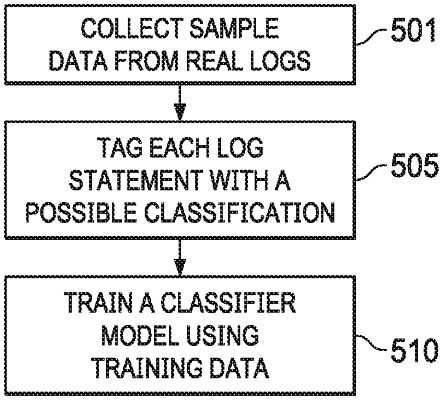| CPC G06F 40/205 (2020.01) [G06F 8/70 (2013.01); G06F 16/3329 (2019.01); G06F 40/30 (2020.01); G06F 40/40 (2020.01); G06N 20/00 (2019.01)] | 20 Claims |

|
1. A method for diagnosing problems from logs, the method comprising:
generating a corpus of training data based on accessing a repository storing previously collected known problems and log messages associated with respective ones of the known problems, collected from logs used in an application development, the logs containing statements from a plurality of sources in an enterprise computing environment, the statements including the log messages, the known failures and log messages previously collected in association with generation of a trained natural language processing (NLP) classifier model that is adapted to classify log statements into one or more of a plurality of predefined classifications based on an NLP feature associated with the log statements, the generating including associating each of the log messages with a specified type of problem indicated by the each log message;
training a secondary statistical model for advanced problem diagnostics using the generated corpus of training data, the secondary statistical model adapted to provide classifications of the log statements that are more specific to varying types of problems than the predefined classifications;
classifying new log statements into more specific classifications utilizing the trained secondary statistical model, the classifying performed by a problem diagnostic module;
identifying, from the classified new log statements, a statement having one of the more specific classifications, the identifying performed by the problem diagnostic module; and
presenting, by the problem diagnostic module, the statement having the one of the more specific classifications through a dashboard running in a browser.
|